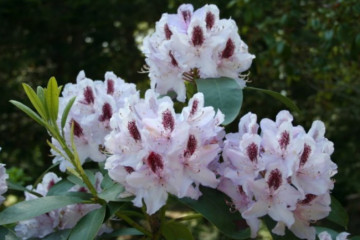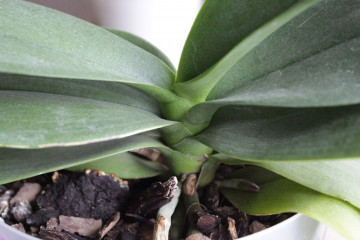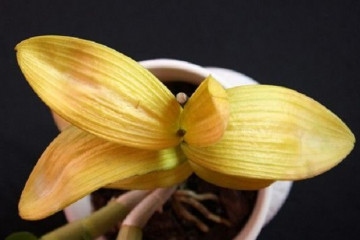Why does the imperial hazel grouse not bloom, some leaves
Content:
The imperial hazel grouse is one of the brightest plants in any flower bed: its bright and colorful flowers attract attention, and the pubescence with green leaves at the very top resembles a crest of a tropical bird. And how sad it is when such beauty cannot be contemplated. In such cases, it is important to find out the causes and eliminate them.
The main reasons for the lack of flowering in hazel grouses
Despite the unpretentiousness of the plant, good growth in the conditions of central Russia and the ease of cultivation, like other plants, hazel grouse is susceptible to attacks by pests and diseases. In addition, the problem can be hidden in planting conditions, in nursing conditions, and even in ambient temperature.
Plant pests and diseases
Royal, or imperial, hazel grouses - one of the most resistant to pests of plants. Often they are planted around various crops to protect the planting from various insects and even mice. But even such flowers with unique properties have their weaknesses. These include two types of insects: lily beetles and rattles. Such pests are dangerous with their larvae, which eat the leaves with pleasure.
Getting rid of them occurs in three stages:
- first, all adults seen on the plant are collected;
- then all leaves with larvae are removed;
- at the end, the plant is treated by any means against leaf-eating pests.
The diseases of these plants can be attributed only to rot, which settles on the tubers of the hazel grouse. One of the reasons for its appearance is excessive soil moisture and stagnant water. Outward signs are weakness, stuntedness and poor development of the plant - if you dig up the bulb, you can see foci of decay on it. In this case, the affected areas are carefully cut out of the bulb, the cut site is processed, and then the plant is carefully dried.
For processing, a fungicide or a manganese solution is well suited, and then the cut must be sprinkled with ash.
Small size bulbs of imperial hazel grouse
One of the main reasons why the imperial hazel grouse does not bloom is the small size of the bulb. Their optimal size for good growth, development and flowering of a plant is at least 5 cm.If the bulbs are smaller, then the hazel grouse will simply grow, gaining their mass and not spending energy on releasing flowers until the tuber becomes the required size. Therefore, when planting small bulbs, you should not count on their early blooming - most likely you will have to wait a year or even two.
Improper bulb care
Another reason why the hazel grouse does not bloom is improper care of the bulbs. Some gardeners grow this type of flowers in one place from year to year, without digging up or replanting. Because of this, over time (after about 2-4 years), the bulbs begin to shrink, multiply, and the flowers do not appear.
To avoid this, the bulbs of the plant are dug up immediately after their stem dries up - this is approximately the end of July or the beginning of August.The bulbs are carefully inspected, removing dry parts and places with foci of decay, then washed in a weak manganese solution, and then dried in the shade for 10-14 days. Then the bulbs are moved to a warm and dry room.
Long-term storage should be carried out in boxes, laid with straw, in dry rooms without temperature fluctuations. But even despite this, the bulbs can begin to rot, so it is necessary to inspect them often enough. But in fact, long-term storage is not the best solution for this plant, so the bulbs are planted in a month or two in a temperate climate.
Optimum temperature for the imperial hazel grouse flower bud
Most species of hazel grouse tolerate low temperatures and wintering well, therefore they begin to hatch out of the ground at the end of April. Even frosts, which are not uncommon during this period, practically do not harm the plant - a cold snap to -5 degrees is easily tolerated by the first shoots.
The flower buds themselves appear at higher temperatures - from +15 degrees. Of course, one of the reasons why the imperial hazel grouse did not bloom, perhaps a sudden frost with lower temperatures. Then the growing plant freezes strongly and, most likely, will bloom only the next year.
Incorrect planting of imperial hazel grouse
In order for this beautiful flower to please with its bright inflorescences, it is necessary to choose the right place in the garden and correctly plant the bulbs. Otherwise, the results will be unsatisfactory. It is important to consider soil conditions, light conditions, plant spacing, as well as bulb size and planting depth. It just seems complicated, but you should not neglect these nuances.
Wrong landing site
The plant loves sunny areas, grows well in partial shade, so for planting, you can choose the southern and southwestern sides, places under the shade of shrubs and trees.
It is also necessary to take into account the composition of the soil: it must be fertile, well-drained and loose, without the possibility of stagnant water and not with surface groundwater. Sandy soils work well, but clay soils will become destructive.
Incorrect planting depth
Good large bulbs are best planted at a depth of 30-35 cm, but the smaller the bulbs, the shallower the depth should be chosen. So, it is better to plant medium-sized bulbs in holes 20-25 cm deep, and small ones to a depth of 10-15 cm.
Why is choosing the wrong depth dangerous? First of all, this will affect the germination of plants - planting too deep will slow them down, and too superficial is fraught with winter or spring freezing of the bulb.
Incorrect planting technique and watering
The hazel grouse will grow well if the entire planting technique is performed in an optimal way. To do this, the following important points must be observed:
- The wells with plants are placed at a distance of at least 30 cm from each other, so that each flower has enough light and fertilizer.
- Ordinary sand is poured onto the bottom of the holes - it will also serve as additional drainage and improve the development of plants, especially if the soil is not sandy.
- Ash is added for better growth of hazel grouse.
- Sprinkle the onion on top with sand, then soil.
- Mulch the landing site well.
In winter, it is good to plant bulbs in open ground in late August and early September.
The most important point is watering the plants.If the soil is well mulched, then it is necessary to water the imperial hazel grouse only in dry or hot weather, otherwise - as needed, without flooding the soil and preventing it from drying out.
One of the most common reasons why hazel grouse turned yellow in spring before flowering is an excess of moisture. This can be caused by both an abundance of rain and a large amount of melted snow, or it can be caused by artificial irrigation.
The importance of blooming care
Timely feeding will also allow you to achieve lush flowering. Immediately after the end of the spring frost, it is necessary to fertilize the entire area of flower growth with a mixture of humus, nitrophosphate and complex fertilizer for flowers in a ratio of 10 liters: 1 tbsp. l.: 1 tbsp. l. Such a mixture is laid out in a layer of at least 3 cm.
When hazel grouses come into bloom, potash fertilizers and ash are added to the soil. After the plant stops blooming, superphosphate and potassium sulfate are added. Such saturation with nutrients allows not only to ensure good flowering, growth and development of flowers, but also to prepare the bulbs for further transplantation.
With a well-chosen growing place, high-quality care, timely transplantation and watering of the bulbs, the question of why the imperial hazel grouse turns yellow or does not bloom will not even arise.
This unpretentious plant, resistant to temperatures and most standard troubles, is the most optimal for growing in central Russia. Observing simple rules, you can enjoy its bright bloom for many years.



















